As COVID Upends the Path to College, Librarians Provide Support
With standardized test largely cancelled, extracurriculars wiped out, and family finances stretched thin, students face a new process.
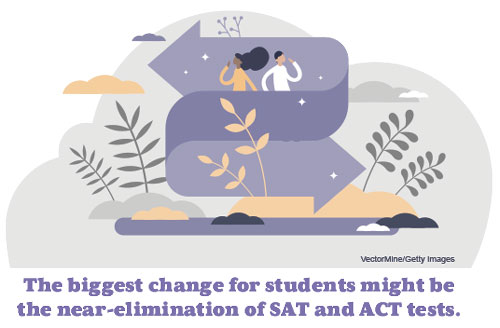
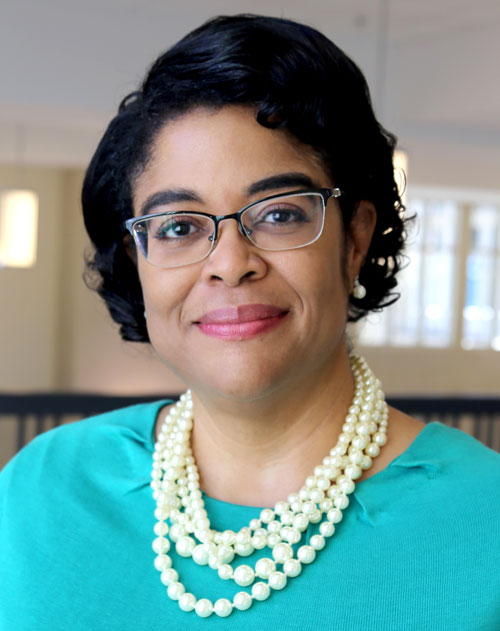 |
AASL president Kathy Carroll.Photo courtesy of AASL |
Back in a different time, say, last year, the college application process could be compared to a high-intensity board game. Students needed to make various stops along their path, making sure they covered squares for GPA, extracurriculars, a personal essay, and an SAT/ACT score. Then there were the financial aid applications, but with enough guidance, students could navigate this successfully on the way to college acceptance.
As bewildering as this process could be, especially for first-generation college-goers, school counselors, librarians, and teachers were more than ready to help guide students through the thicket. But the playing board has been upended since last year. SAT and ACT test dates are being canceled because of COVID-19 concerns, wildfires, and hurricanes. Many colleges have gone test-optional, allowing students, at least for this year, to apply without standardized test results.
With so many schools on remote learning or a hybrid schedule, a number of extracurriculars have been wiped out. Zoom classes have even thrown a monkey wrench into GPAs, with some schools eliminating letter grades in favor of pass/fail, and others contemplating raising grades for all students. And many families’ finances have been stretched thin.
All of this means that the end goal coveted by so many high school seniors, acceptance into a four-year university, is being second-guessed. Faced with the prospect of incurring debt while attending classes from home (if colleges continue remote teaching), a wide range of students are considering community colleges or choosing an institution closer to where they live.
But one part of this process hasn’t changed. Counselors and librarians remain well qualified to help students navigate these new challenges. Some of the work, such as refining personal essays, remains the same. Other areas, from rethinking what schools to attend to deciding if it’s necessary or possible to take an SAT/ACT test, need nearly weekly updates as the coronavirus continues to scramble expectations and change college policy.
“I think our favorite word of the year is ‘pivot,’” says Kathy Carroll, president of the American Association of School Librarians (AASL), referring to how librarians help students adjust to new expectations. But Carroll remains resolute that no matter how much things change, librarians can, and should, help students because of their institutional knowledge and ability to research new developments. “I feel I know more about the college process than should be legal,” she adds.
“Education has changed a great deal in just a few months,” says library media specialist Ciro Scardina of the sea change since March. “College is also going to change.”
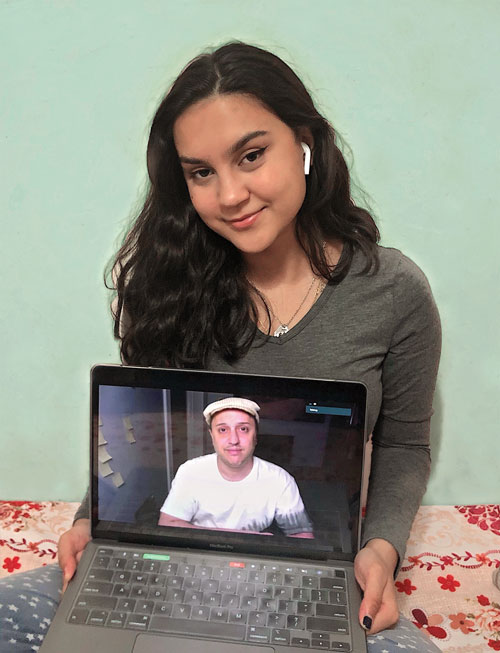 |
Ciro Scardina (on screen), library media specialist at Edward R. Murrow High
|
Coordinating with counselors
In most schools, guidance counselors take the lead in helping students apply to college, making sure applications are complete and sent in on time. In some, such as Edward R. Murrow High School in Brooklyn, NY, counselors fight to control the process, says Scardina, who works there.
When he first tried to help students three years ago, the head of counseling “wanted nothing to do with me,” he says. Scardina decided to meet with students on his own to help them with their essays. Since that counselor left, he has had a more official role in the college application process.
Whether you are invited to help or you force your way into the conversation, Carroll, the lead librarian at Westwood High School in Columbia, SC, argues that she and her peers are uniquely qualified to help students.
“Look at our standards,” Carroll says. “It’s a natural fit. We build rapport with students and we have the expertise to assist them.” She says her library contains a section where students can research not only which schools to apply to, but also which major they may want to pursue. Teachers are relying on librarians more during remote learning, Carroll adds. Also, with so many in-person activities replaced by Zoom calls, digital etiquette for students becomes more important.
Librarians have another advantage over counselors in this process, she says. Counselors have to cover certain materials with each student, from college prep to social and emotional learning. This means that most counselors see students at regular intervals without much leftover time. Librarians “are more fluid,” Carroll says. “We’re more readily available.”
Often, counselors are stretched thin, so librarians can help students with specific parts of the application process. The American School Counselor Association recommends that each counselor handle 250 students. But in reality, a typical counselor is responsible for 455 students, the association said last year.
At Murrow, even though the school of 4,000 students has about 15 counselors, only one is designated specifically for college, Scardina says.
Joquetta Johnson, library media specialist at Baltimore’s Randallstown High School, explains in detail what types of conversations she typically has with students. It’s easy for her to ask students to check their preferred college for a major they are interested in, but she also makes them aware that colleges have their own admission goals that may not match what a student is looking for.
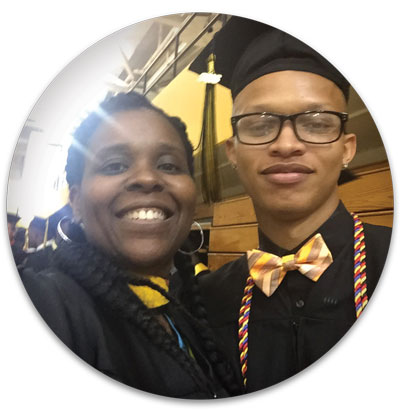 |
Joquetta Johnson (at left), library media specialist at Baltimore’s Randallstown High School, with a 2016 graduate who regularly returns to speak with her students about college.Photo courtesy of Joquetta Johnson |
“Every year, colleges have a different focus,” she says, from some wanting to increase students from one area of the country, to others seeking more students of color or even more women. “I ask students what supports the school has for you. A lot of people want to go away [to college], but you also want to graduate.”
Now these questions are taking on more urgency, she says, relaying that she asked one student if she was really ready to go across the country to Utah in the midst of both civil unrest and a pandemic.
In another instance, a student received a $70,000 scholarship and was convinced that she would attend that university. When Johnson broke down the financial aid with the student, she realized that with the award spread out over four years, and with the school’s high tuition and room-and-board costs, the student would be responsible for up to $40,000 a year.
Johnson says her concerns stem from problems she had when she went to college. With timely help from an adviser, she quickly realized that she hadn’t signed up for enough courses and might have lost her scholarship in her first year.
She now counsels her students to go beyond typical research when looking at potential schools, advising them to monitor the university’s social media accounts and find out what organizations are offered.
Testing concerns
The biggest change for students might be the near-elimination of SAT and ACT tests. Pre-COVID, more schools were already choosing to go test-optional, meaning that students could apply without submitting scores. More than 900 colleges were in this category in 2019, including such heavyweights as the University of Chicago, Wake Forest, and Bucknell.
To make the terminology clear, test-blind schools won’t consider SAT/ACT scores even if they are submitted. There are currently a handful of these schools, including Hampshire College and the California Institute of Technology. Test-flexible schools, which include New York University, allow students to substitute either school tests or some other test, such as AP subject tests, in place of SAT/ACT scores.
When COVID closed schools and forced the cancellation of tests across the country, even more schools opted to go test-optional, at least for students applying for fall 2021. The entire University of California system and all seven Oregon public universities joined this trend. Carroll says because the COVID shutdowns have lasted longer than expected, many students are wondering if these tests will ever become important again.
To address changing admission needs, leaders at 360 colleges endorsed a new document, Care Counts in Crisis: College Admissions Deans Respond to COVID-19. To eliminate confusion about shifting priorities, this document lists five areas these officials value in students during this time: self-care, academic work, service and contributions to others, family contributions, and extracurricular and summer activities.
In an interview with a campus news outlet, Wesleyan dean of admissions Amin Abdul-Malik Gonzalez said he realized students have been cut off from visiting schools and pursuing both sports and extracurriculars, such as joining a school band. Gonzalez also noted that students have less contact with adults and peers who could help them grow.
While the Connecticut liberal arts university has not yet decided how to alter its acceptance policies, Gonzalez said it expected to replace in-person interviews with online video calls. In the meantime, the school instituted what officials call WesChats, 30-minute informal web calls between applicants and students.
“[We] are committed to making good decisions and trying to understand students’ individual and family circumstances,” Gonzalez said in the interview. “We want students to have the opportunity to shine and to present themselves as fully and authentically as possible. This is far from an ideal situation, and it’s an imperfect process to try to distill an 18-year-old student down to the materials contained in a college application.”
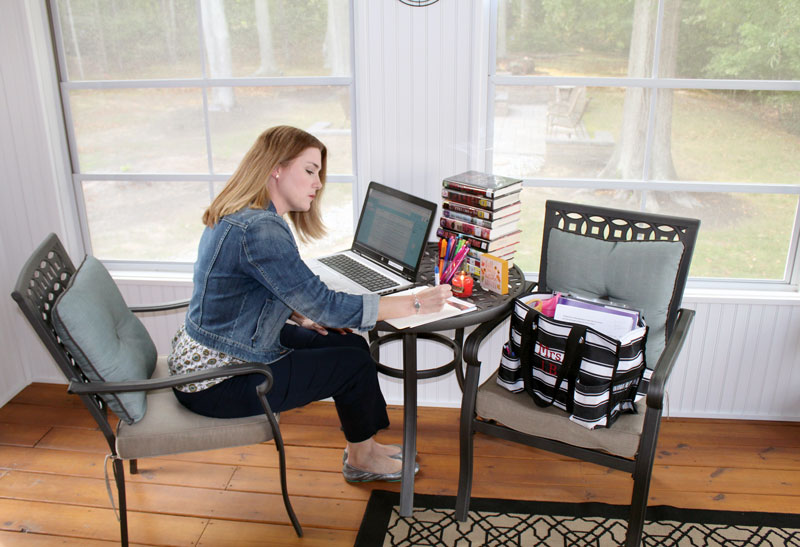 |
Kristy Jett-Brown, librarian at Chancellor High School in Fredericksburg, VA, working remotely.Photo by Shawn Brown |
One trend librarians are seeing is that today’s seniors, and some juniors, are reconsidering how far they want to travel to attend college, afraid that an outbreak could send them right back home.
In one instance, James Madison University closed its campus just nine days after opening, says Kristy Jett-Brown, librarian at Chancellor High School in Fredericksburg, VA. At her school, Jett-Brown created a mock interview program where students could practice face-to-face interviews with school administrators and local businesspeople. These sessions will help students learn the interview basics (phone off, make eye contact) and how to present themselves effectively, she adds.
In the past, she says, the school’s top 10 percent of students would normally be focused on four-year schools. But now, they are more concerned about the financial impact and what the experience will look like. Because of this, and because the state has a guaranteed transfer agreement that allows students to easily transfer credits from local community colleges to four-year state universities, many of these students are considering starting their higher education at a community college.
The same trend is true for students Scardina works with in Brooklyn. “For their entire life, they’ve had a plan for what their college years would be, and that’s totally
different now,” he says. More students are taking a gap year and hoping that, in the meantime, a vaccine will return colleges to normal.
Graduates from Murrow have chosen not to attend upstate New York colleges, he says, but some have even eschewed attending Fordham, which is less than 30 miles from the Brooklyn high school.
There are differences between seniors, who are primed to complete the application process in a matter of weeks, and underclassmen who have more time, says Scardina. Seniors have had to juggle changing priorities in real time, while younger students can at least hope the changes happening now will solidify before they are forced to make decisions.
And this trend isn’t only affecting collegians-to-be, Carroll says, as some of her former students have opted to stay home from their four-year colleges this year and continue their education at a local community college.
Like other librarians, Carroll also misses the typical back-and-forth with students that would allow her to get to know their likes and dislikes, all while gently probing about their career aspirations.
“We’re all in some unusual territory right now,” she says. “Students are navigating it well, but there are going to be missteps and we’ll be there to assist, regardless of what new format there is. We’ll still help students and provide them with the best information.”
 Wayne D’Orio writes frequently about education and equity.
Wayne D’Orio writes frequently about education and equity.
RELATED
The job outlook in 2030: Librarians will be in demand
The job outlook in 2030: Librarians will be in demand
ALREADY A SUBSCRIBER? LOG IN
We are currently offering this content for free. Sign up now to activate your personal profile, where you can save articles for future viewing






Add Comment :-
Be the first reader to comment.
Comment Policy:
Comment should not be empty !!!